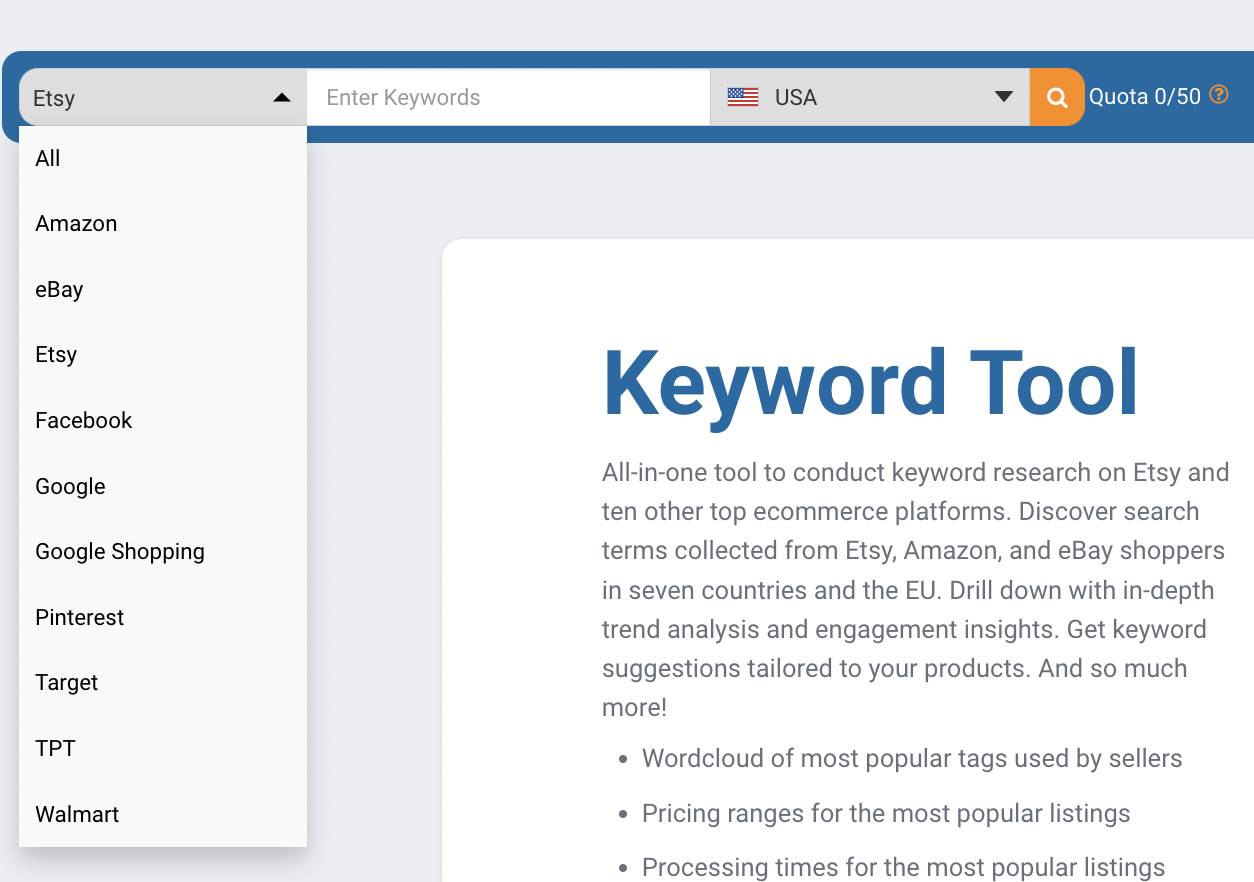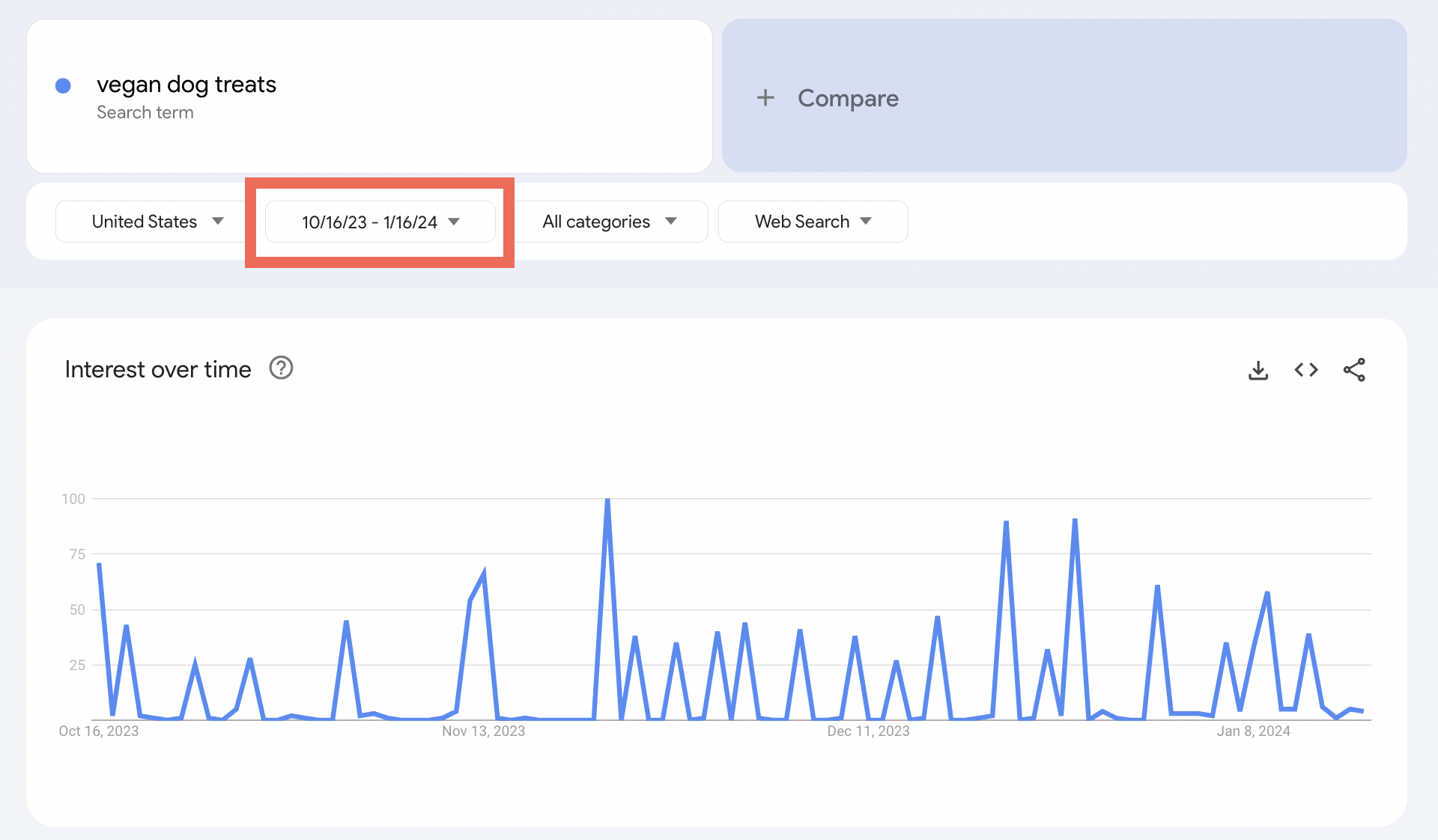How to Test Market Viability On Your Etsy Digital Product
What is Product Viability?
AKA - Is anyone going to buy this?
This is the question every seller, entrepreneur, and business owner has when they’re first embarking on their journey.
Understanding product viability is a double edged sword. Not only do you need to research whether or not users will be interested in and actually purchase your product — you also need to ensure you have the capital (time, money, resources) to create your product without going bankrupt, or insane. Once you decide if your product is viable, determine how to stand out in the market. This is requires a combination of good product design and commitment to marketing.
This article will outline a process to research and test product viability while discovering keywords to help your target audience find your product.
Before you begin executing this process, you need to determine one thing.
What product do you want to sell?
This can be general. But we’re going to be doing lots of research (“in the trenches” type of work) and you will need a starting point.
For the sake of this article, we are going to pretend we want to sell homemade, vegan dog treats.
Performing a Competitive Analysis
Find Your Competitors
What is the product you want to sell? I want you to type the name of that product into the following places:
Google
Etsy
TikTok
Going beyond Etsy for your research will give you a competitive edge. This exercise should take a considerable amount of time. Categorize your competitors by those at the top, to those with a small but engaged audience, to those who have not yet been discovered.
Click the button below to download my spreadsheet template. ***Note: You will need to make a copy of this to begin editing.
Scour the Reviews
Reviews will help you identify what an Etsy seller is doing well and where things can be improved (aka, where you can dominate).
You can ride on what they’re doing well (by not copying, but creating your own version of it) and you can use other brands weaknesses to define differentiators.
If you want to go a step beyond reviews, read comments on a brand TikTok or Instagram account.
Note the Price Range
As you catalog your competitors, be sure to note their price range. Find their cheapest product that is relevant to what you want to sell. Do the same with their most expensive product.
Don’t record prices of products not relevant to your brand. For example, as a vegan dog treat brand, we aren’t going to record prices for homemade cat scratchers from a competitor who sells vegan dog treats and cat scratchers.
How to Do Keyword Research For Your Digital Product
To begin the process of identifying which keywords you should include in your Etsy profile and Etsy listings, we are going to rely on a free tool.
It’s called eRank. Click the button below to register for free and follow along.
We’ll begin by navigating to “Tasks” and selecting “Keyword Explorer”.
Use “Etsy” from the drop down and begin by typing in a general keyword related to your product.
Firstly, we are interested in “Top Tags”. You’re looking for keywords that make sense, have a minimum of 20 occurrences, and medium competition.
Tip: It’s not a bad idea to record the first 20 tags, regardless of competition, so you can test different tags as you begin selling.
We are next interested in “Top Listings”. Compare this to your list of competitors. Did you capture these already? Are there new competitors to add?
Record all of your new keywords in Tab 2 of our spreadsheet. Note that you will not be able to fill in the “Sentiment” column yet.
Doing a Keyword Deep Dive
Grab your spreadsheet and the list of keywords. We’re going to plug each of these keywords into multiple search engines. You may have the same keyword listed multiple times, but for different platforms. If you can, group those together by adding rows either above or below in the spreadsheet.
Take your keywords and type each of them into:
TikTok
Google
Etsy
Amazon
eBay
You might not be able to identify data for each column on each platform. For example, we can’t really pull “Occurrences” or “Google Searches” for eBay keyword research. And that’s okay! The main thing you’re looking for is high performing, high engagement keywords you can apply to your Etsy store. Keyword research within Etsy is your primary focus, but interest across other platforms is equally as important when testing viability.
Below is an example of identifying keyword sentiment:
I typed “vegan dog treat” into TikTok, clicked on the first couple of results and scrolled the comments. For this, I would consider the sentiment to be “neutral”. Nobody is attacking the creator, but they aren’t necessarily fawning over the video. A neutral keyword is a good one to keep in the back pocket and an easy keyword to test with minor risk.
How to Track Market Trends for Your Etsy Digital Product
The final test for product viability is to track trends over a period of time. To do this, we’re going to rely on Google Trends and record findings in the spreadsheet (Tab 3).
How to Use Google Trends to Track Keyword Trends
Visit Google Trends.
Type in your keyword and hit “Explore”.
Adjust the location to your target audience. If your target audience spans multiple countries, you may need to do this several times.
Use the “Custom Time Range” tool to run a trend report. I recommend benchmarking the following:
3 months
6 months
1 year
5 years
10 years
Note any corresponding search terms you could test as keywords in Etsy. This is also an opportunity to gather more insights on your target audience.
So, what are you looking for in these trend reports? You’re looking for discrepancies.
For example, perhaps “vegan dog treats” searches significantly nosedived March - September 2020. It’s important to note whether or not your product can survive the cyclical nature of the economy or if they are a luxury good to most.
Will Your Digital Product Sell on Etsy?
There’s only one way to find out.
This guide is a great start to decide whether or not you want to sell a product on Etsy and create a strategy to dominate the Etsy algorithm.
Once you’re set up as a Seller in Etsy you’ll have access to a suite of marketing tools. You’ll need to gain some momentum until these tools begin to filter in data. Once the tools are active, you’ll be able to streamline the process of updating and optimizing product listings and keywords.
Keep in mind, Etsy is the one marketplace offering unique, non-wholesale gifts. Cater your product to this and Etsy will reward you. Etsy prioritizes certain goods around certain events — use this to your advantage. For example, pink and red prints have a greater chance of being highlighted around Valentine’s Day (and you may also want to update keywords for the holiday).
Take this guide, start creating, and you’ll be well on your way to owning a successful Etsy shop.





